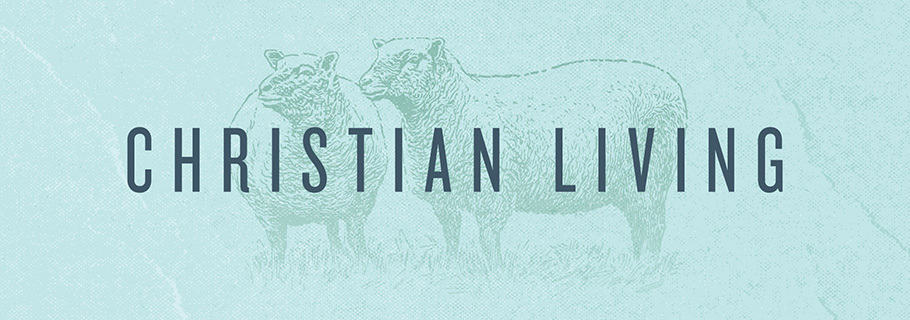I grew up in a Christian culture in which very little evangelism took place. How little? The first believer’s baptism I ever witnessed was my wife (she was my girlfriend at the time) and that was when we were eighteen or nineteen. It was the first time our church had ever baptized an adult. And what’s more, it was the first time most of the people who attended that church had ever seen an adult get baptized.
A few years after my wife’s baptism we moved away from the town we had grown up in so we could be closer to my place of business. In the past decade we have been members of two different churches that place much greater emphasis on reaching the lost. We have seen many, many people come to faith, including several who are now close friends. We have seen lives altered dramatically and have seen more baptisms than we can count–baptisms in churches, rivers, pools, and a really big, ugly aluminum tank. We have shared in the joy of seeing people profess their faith by being baptized. It truly is one of the greatest joys of any church.
Over the years I’ve had to reflect on what made the churches I attended as a child and teenager so ineffective at evangelism. While there are several reasons I could provide, and they are of varying importance, there is one that I believe stands at the foundation of the rest: These churches often regarded the unbeliever as the enemy. Of course the church would never have articulated that belief, but it seemed to be deeply rooted.
This attitude manifested itself in many ways. One of the clearest ways was among the children of church members. They would rarely, if ever, be allowed or encouraged to play or even interact with the unsaved children in the neighborhood. I knew an “urban missionary” whose children were confined to their backyard and were forbidden from playing with the other children. The churched children were not allowed to play with other children lest they become corrupted by their worldliness.
My observation was that this approach failed and failed badly. First, the church was not faithful in its calling to take the gospel throughout the world. They preferred to exist in an enclave, safe from outside influences. Second, and ironically, the children developed a fascination with the world. I believe this was, in large part, because access to the outside world had been denied to them and they had never seen the pain and heartbreak that are the inevitable results of forsaking God. The world can look awfully attractive until a person sees the results of giving himself over to it. Third, the parents were prone to ignoring worldliness in their own children. I know that I saw more drugs, more drinking, more disrespect and more awful behavior in the Christian schools I attended than I did in the public schools. This isolation simply did not work. What I saw was that we do not need the world to teach us worldliness. Worldliness arises from within.
The attitude that was modeled by my parents was far different. They took the opposite approach and we, their children, were always encouraged to make friends with the children in the neighborhoods we lived in. We saw many children and parents come to faith in this way. Many others may not have become believers, but they received a clear presentation of the gospel so that they are now without excuse before God. And regardless of whether or not these people came to faith, we gained many good and valuable friendships. Mom and dad did not do this because they regarded the folks in the neighborhood as a project, but out of a genuine love, concern and appreciation for these people. The person next door was not an enemy, but a person who was just as unsaved as my parents were not too many years before. The person next door was someone in desperate need of a Savior, and they intended to give everyone the opportunity to meet the Savior through them.
My parents were not afraid. They did not hide us away from the world. They allowed us to see sin and to see the effects of sin. They allowed sin’s mystique to be destroyed, they allowed us to see unbelievers acting like unbelievers. When we saw difficult things or shocking things they taught us that the wages of sin is death. We saw this, not in the abstract but in reality.
Sometimes worlds clashed. There were a couple of times when my sisters brought friends to church, friends who were unsaved but were showing interest in the gospel, only to have them mocked or scorned. One little girl was scolded and had her ear “flicked” by the woman in the pew behind her because she was not able to sit still throughout the service. A friend my sister brought to church was openly mocked by the children in the church because he had dyed-blond hair and an earing. He never returned, and as far as I know, never expressed any openness to the gospel after that time.
I truly believe, after many years of reflection, that the heart of the problem in these churches was in their attitude towards the unbeliever. The person next door was the enemy; he was a person to be feared for what he might do to the family, and the children in particular; he was someone to be regarded with distrust and suspicion rather than with love and sympathy.
The irony is that when we protect ourselves from this enemy, we are prone to take our eyes of the real enemy; we allow him to slip by, unnoticed. We are not waging war “against flesh and blood, but against the rulers, against the authorities, against the cosmic powers over this present darkness, against the spiritual forces of evil in the heavenly places” (Eph 6:12). The real enemy is not next door. The real enemy is our own sinfulness and the worldliness that continues to try to manifest itself in our lives. The real enemy is spiritual, not physical. The real enemy, the most dangerous enemy, is within.










